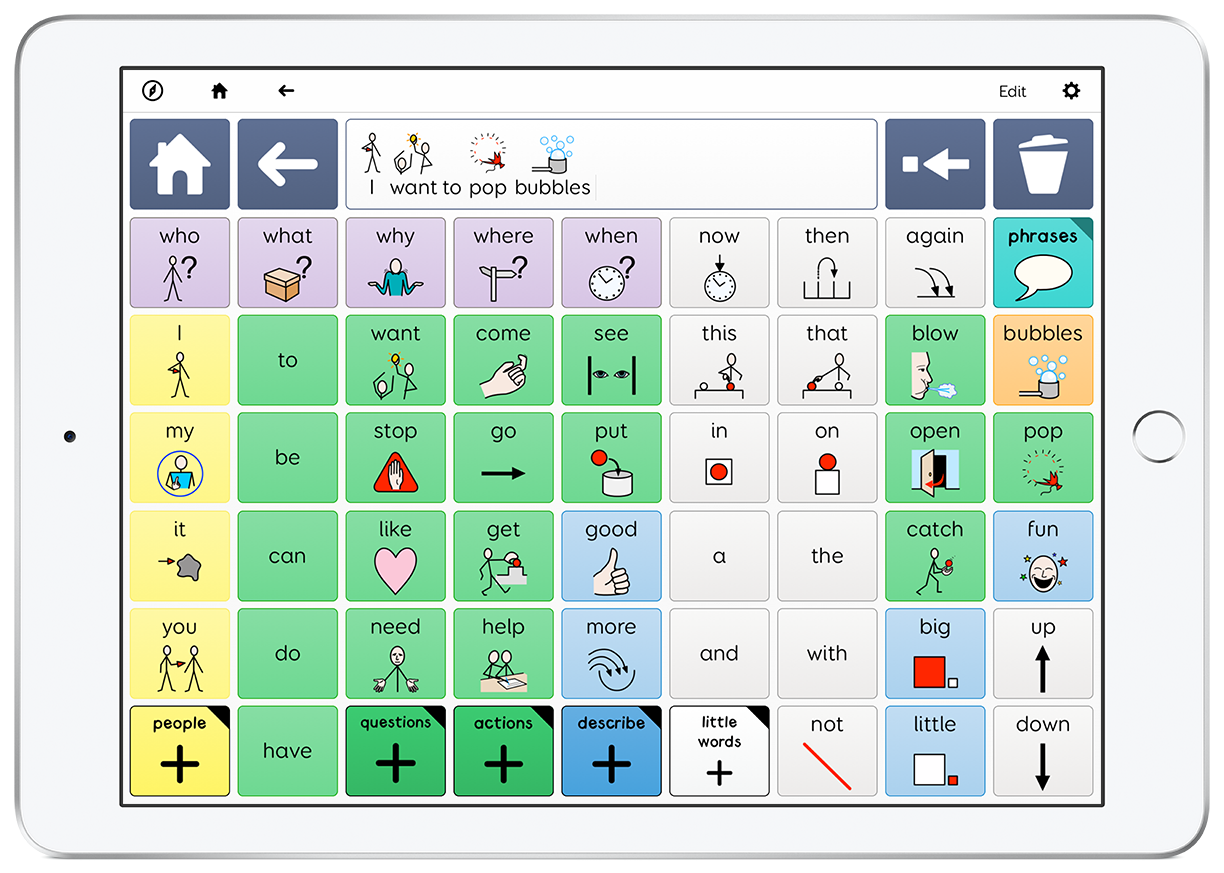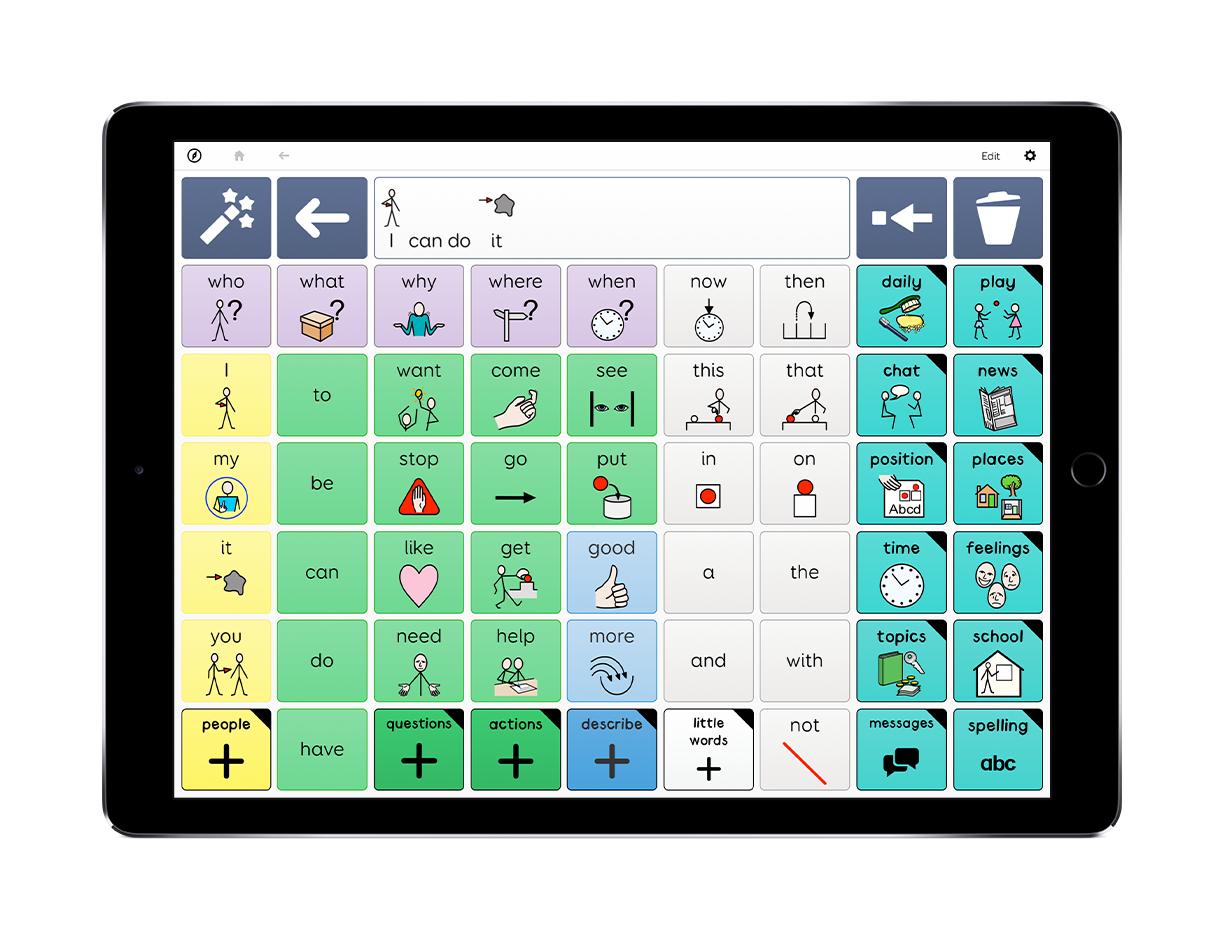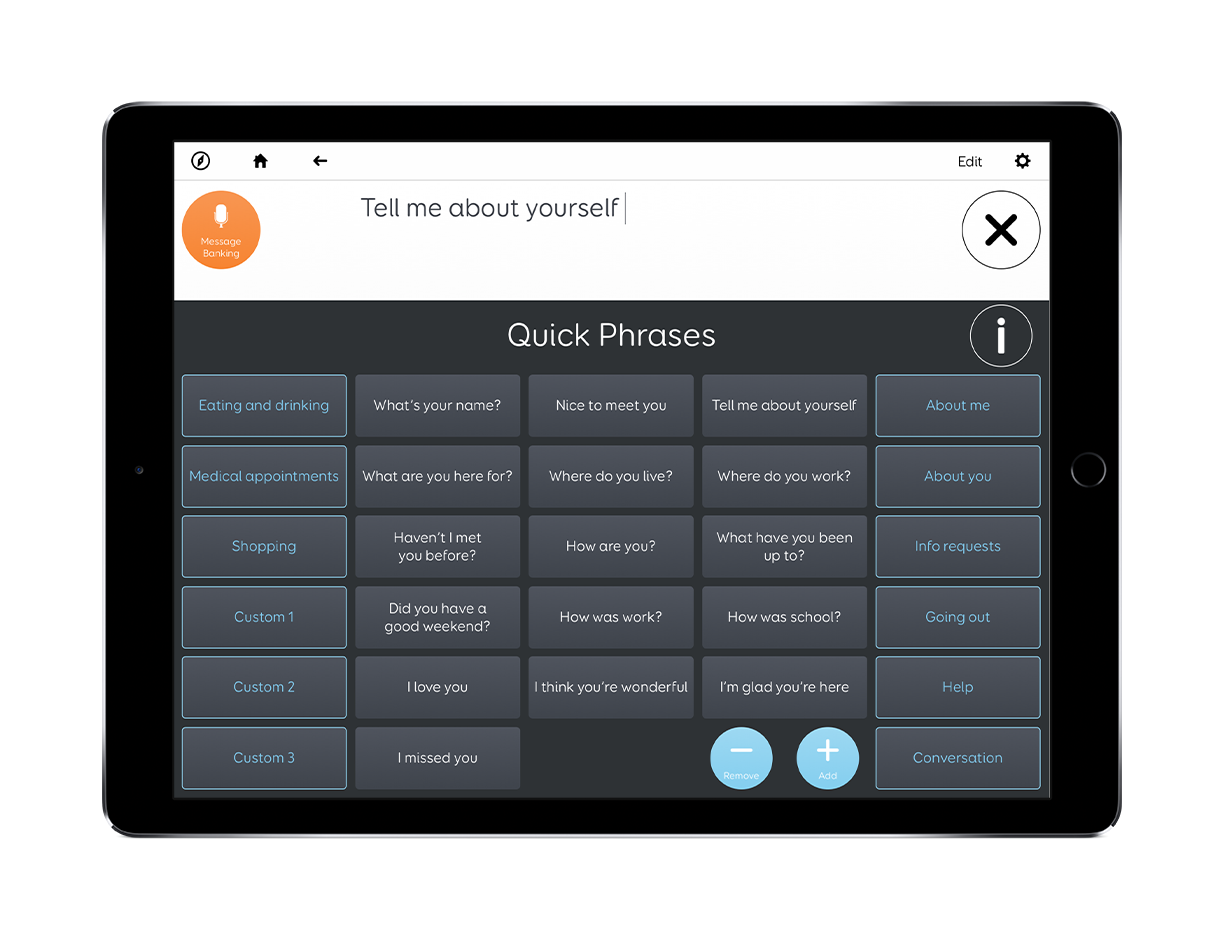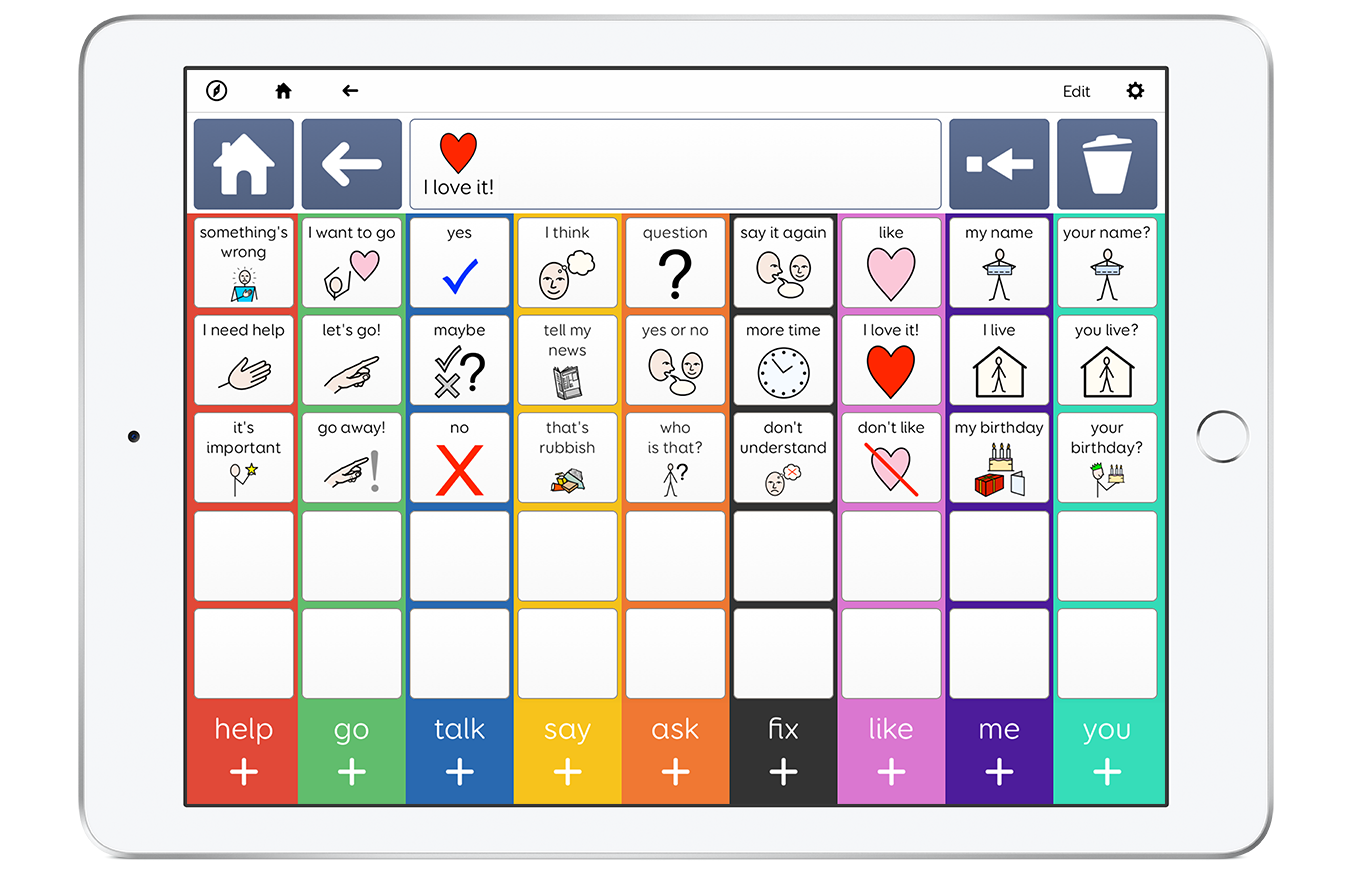



Grid for iPad
Priced from
£350.00
What we say
Communication app for creating symbol and text AAC.
ADD FOR COMPARISON
If you are a national retailer who is not listed please read our faqs to find out how to add your company. If you are listed and need to update your details please read how to update your listing.
Product Information
Manufacturer's Product Description
Grid for iPad is a communication app that gives a voice to people without speech. Available as a one-time purchase or monthly subscription.
Manufacturer's Contact Details
Smartbox Assistive Technology Ltd
Ysobel House
Enigma Commercial Centre
Sandys Road
Malvern
Worcestershire
WR141JJ
UK
01684578868 info@thinksmartbox.comKey Features
- in-app editing
- switch access available
- add to existing grid sets or create new ones
- fully customisable
Product Dimensions
No dimensions have been specified for this product
Product Specification
No product specification has been specified.